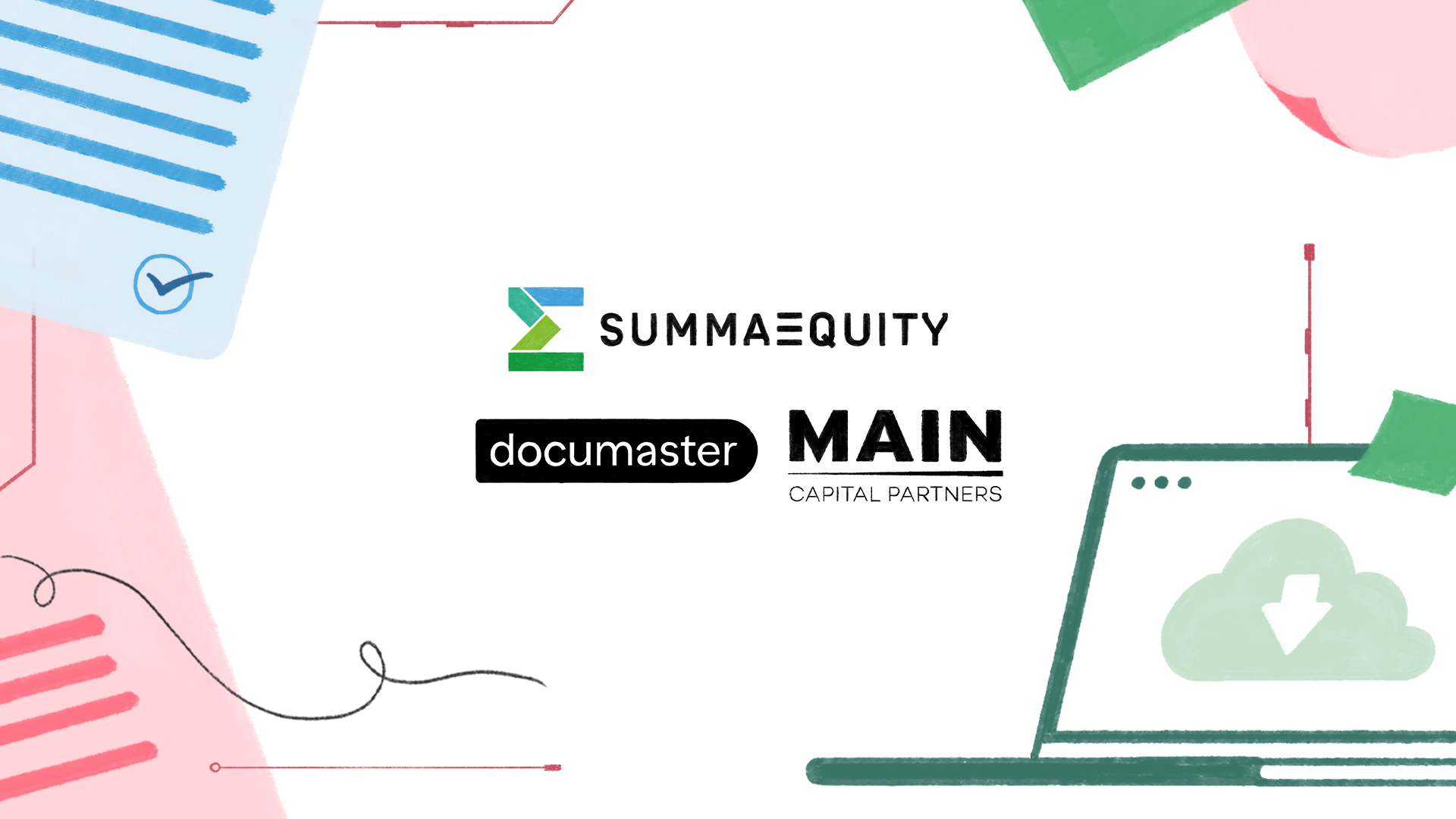The importance of the circular economy with Bertrand Camus
Bertrand Camus joined Summa Equity in September 2022 as a member of the Resource Efficiency team, working to identify investment opportunities, develop strategies, and support portfolio companies, with a particular focus on the circularity, waste, and water sectors.
- Podcast
7 min read

Having spent 27 years at the French multinational utility company SUEZ, Bertrand Camus joined Summa Equity in September 2022 as a member of the Resource Efficiency team, working to identify investment opportunities, develop strategies, and support portfolio companies, with a particular focus on the circularity, waste, and water sectors.
In this episode, Bertrand, Reynir, and Vesna discusses the opportunities that are coming next for the waste and circular industry are enormous.
The theory of change
Theory of change, says Bertrand, is about changing the system. If we keep on going as we have done for the past few decades, we will never solve the global challenges we’re up against.
“The theory of change is really defining how the system should change to achieve goals of resource efficiency. First of all, [we need to] drastically reduce greenhouse gas emissions, CO2 in particular; the second thing is to improve access to resources, and the planet is limited.”
We know that there’s going to be a struggle in the future for the scarce resources Earth has, not to mention the detrimental impact we wreck on biodiversity every time we extract these materials from nature. The theory of change allows us to think about how the system should be, the destination, what needs to change, and what the path to get there looks like, says Bertrand.
But to do this, everyone needs to play their part, because we will not be able to change the system and address this wicked problem if we aren’t all pulling in the same direction.
Reduce, reuse, recycle
When we speak about the theory of change in terms of waste management, says Bertrand, it’s about reusing, reducing, and recycling, with the aim of lowering carbon emissions.
We could achieve this by simply dividing our consumption in two or dividing the number of journeys we make in half, etc., but most people aren’t going to want to do that, nor do we want to do that to society, because material usage has brought prosperity into our economies, in particular in northern countries in Europe. By switching to a more circular economy, we can still enjoy this prosperity, while having a much lower impact on the planet, both in terms of CO2 emission and biodiversity.
However, warns Reynir, it doesn’t matter if every single waste management company in the world starts heading in the same direction, if the industrial companies, the government, the consumers don’t also act in a similar fashion – with the same end goals and outcomes in mind – we won’t achieve this reduction in impact.
“The theory of change is not a strategy plan for any one company. But it informs the strategy planning for us as an investor looking at investing to solve global challenges. This theory of change informs where we should invest, and maybe where we shouldn’t. It informs our view of where the world is going and how this challenge is going to be solved.”
The problem with a linear economy
While the focus is on creating a circular economy, and there is a clear shift towards this, things are moving slowly, says Reynir. If you measure how much is being recycled, and how fast the circular economy is developing, it’s surprisingly slow when you look at the numbers. The amount of waste still going to landfills in Europe is shocking.
You just have to look at the inefficiencies all around us, adds Bertrand, to see what opportunities are available – for example, most personal cars are only used 5% of the time, yet the environmental impact that goes into their creation is enormous. Or the construction industry could reduce the quantity of iron and steel and concrete it uses to achieve the same results if architectural design was better done, or if more care and concern went into material and resource usage.
“Circular is not only about recycling, it’s about reducing the user’s material. So trying to eliminate those inefficiencies.”
The EUR 230 billion investment opportunity
There’s a lot of waste happening up and down the whole chain, says Reynir. When you look at what is being recycled today, recycling isn’t actually recycling, because it all depends on what you do with the ‘waste’. So much of what we do, in the name of ‘recycling’, is actually a down cycle, where the new material becomes less valuable than the original material.
What you want to be doing when you recycle, is upcycle, advises Bertrand, i.e. turn something of waste into something more valuable than it was before. But, in order to improve the upcycling, more investment is needed to improve the initial sorting.
“We looked at the total capital needed. To do this, about EUR 50 billion needs to be invested in improved sorting, about EUR 80bn needs to be invested in better recycling and upcycling of material, and about EUR 100 billion is needed to invest in creating valuable products like sustainable aviation fuel.”
Meaning there’s a EUR 230 billion investment opportunity in order to facilitate this change. And the team at Summa have calculated that while the circularity of materials today represents a value pool of EUR 160 billion per year, this could go up to EUR 820 billion by 2040.
“To invest EUR 230 billion to create this revenue can unleash EUR 1-2 trillion of value creation. So, I don’t know what you think, but to me, this is one of the greatest investment opportunities I’ve ever seen.”
If that doesn’t entice you to get involved, think about it this way, suggests Bertrand, there is no way Europe can reach the net zero target without embracing circularity. To achieve it will require close collaboration and a lot of joint action between European companies, policy makers and investors
Regulating the circular economy
The European Commission is setting the tone, says Bertrand, which is very important. It’s absolutely critical to keep up with CO2 taxes and ETS mechanisms, because that’s what makes circularity viable businesses. That and having investors ready to invest.
As mentioned before, we actually currently recycle very little, says Reynir, most of it is downcycled. But with the technologies available today, and if we invested today, between 60 and 70% of end-of-life material could be reused into a new cycle. By 2040 that could go up to 80%, which would result in more than 50% lower emissions compared to where they are today.
“It’s a massive opportunity and the technologies are available today. So if we just figured out how to orchestrate all of this, and move in the same direction, this is possible. And it’s a great investment opportunity as well.”
To find out more please read the paper on linear chain circularity, says Bertrand (link in show notes), because it has implications for all companies, for consumers, for those working in government and policy setters. As long as you can see the bigger picture and what needs to be achieved, no matter what job you have, it’s possible for everyone to lean in and make this happen.
“Looking at it from a business opportunity and investor standpoint, it takes EUR 230 billion of investments to make this happen. That creates over EUR 800 billion in revenues. And that unleashes a value creation opportunity of between EUR 1-2 trillion and all the jobs that go with it. So it’s one of the most fantastic investment opportunities that I’ve seen, where you can really invest to create value and create jobs, and address the resource problem that we have, and the climate change issues, and CO2 emissions that we have.”
Are you interested in learning more about the theory of change & circular economy?
Download the full report via the button below.
The Summa Summarum newsletter
Sign up to our newsletter
Latest readings
News
The case for scalable regenerative agriculture
Read more
Investing in food and agriculture for health and planetary resilience
Read more
NetGuardians and Intix unite to form Vyntra
Read more
Planetary boundaries as a guiding framework for sustainable growth
Read more
Summa Equity announces exit from Documaster
Read more